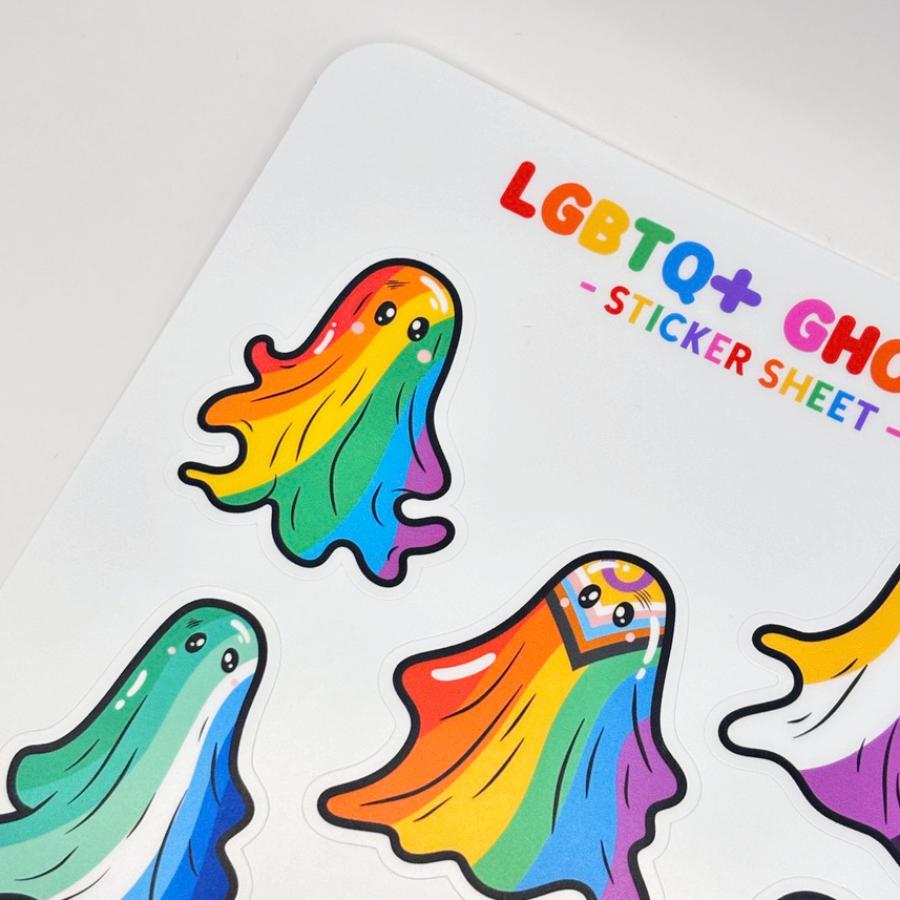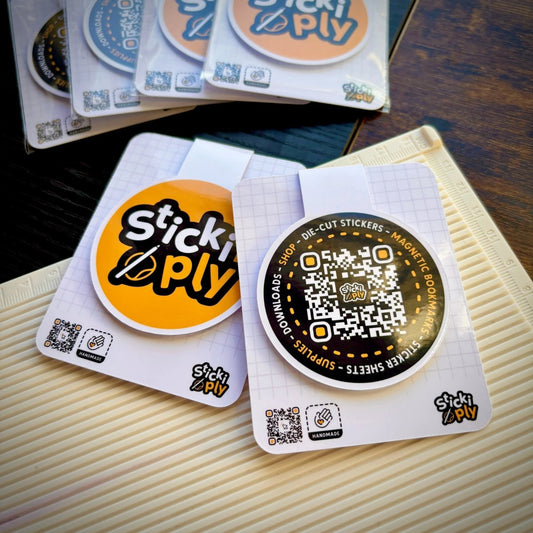
How Small Businesses Can Survive the U.S. Shipping & Tariff Shake-Up
📌 Summary: From August 29th, 2025, every parcel shipped internationally to the United States will face import tariffs and extra charges regardless of its value due to the end of the long-standing “de minimis” rule. On top of tariff rates, shipments sent via national postal systems (like Royal Mail, Australia Post, Canada Post) and handed over to USPS will face a flat postal penalty of around $80 USD per parcel, no matter the order size or weight.
These changes mean that small businesses and independent artists worldwide must either change the way they ship to the U.S. or risk their customers being hit with massive penalties for a single sticker, bookmark, or low-value item.
Using couriers such as UPS, FedEx, or DHL avoids the postal penalty, but it pushes shipping prices into the region of £17.99 just to send a £3 sticker, and that’s before tariffs and brokerage fees. For many small businesses selling low-cost goods, these changes will make direct U.S. retail sales financially unworkable unless they adapt their model.
In this guide, we’re going to walk through practical ways to preserve at least some U.S. sales, find new opportunities, and reduce the damage these changes may cause to your small business.

Why This Change Hurts Small Businesses across the World 🌎
The biggest blow for small businesses is not the tariff rate itself (10% on UK origin goods), but the attack on affordable national post options which will now incur $80-$200 flat fee charges per item. For years, small sellers could use services like Royal Mail International Standard/Tracked to get low-value items to U.S. customers cheaply and without any tariff rate applied. Now, every one of those parcels that are handed to USPS state-side will incur a flat postal penalty of around $80 USD-$200 per item for at least the first 6 months.
Let’s look at two real-world examples from a UK perspective:
Real-world examples (UK perspective)
🔘 Example One: If you send a small parcel to the U.S. via Royal Mail International Standard, it might cost around £3.50 in postage. From August 29th, that same package will trigger an $80 USD postal penalty for the U.S. customer, plus the tariff on the declared value and shipping. That means a £10 order could suddenly cost your customer £88+ in extras — completely killing the sale.
🔘 Example Two: Switch to UPS, FedEx or DHL (Third Party Couriers) and the penalty is avoided. But now you’re paying £17.99 for anything up to 2kg, plus you're still paying the 10% tariff on product + shipping price, and a $14 brokerage fee if sent DDU. On a £200 order, that’s about £20 in tariffs plus around £11 in brokerage — painful but manageable. On a £10 order however, it’s just not gonna work.
This is why low-cost, low-weight goods like stickers, bookmarks, and prints are the most at risk. For many small sellers, the maths simply doesn’t work unless they radically change how they sell to U.S. customers.
Sending Original artwork like paintings, limited edition prints, drawings or sculptures? You might be protected from tariffs. Art is protected under a 1977 federal law that treats artworks as “informational materials” rather than commercial goods, preserving cultural exchange even during trade disputes.
For more information on original artwork and the rules around HS Codes, Country of Origin and more please give this blog a read from Hyper Lux Magazine here.

Why Canada 🇨🇦 & Mexico 🇲🇽 Might Be Safer - For Now
Canadian sellers have one small advantage right now — the USMCA trade agreement between the United States, Mexico, and Canada. If your goods are genuinely made in Canada and meet the agreement’s rules of origin, they can still enter the U.S. without tariffs. That means handmade products like stickers, art prints, bookmarks, or jewellery created entirely in Canada could dodge the country specific tariff rate that’s hitting everyone else.
But this doesn’t mean Canada or Mexico is immune. If your products contain imported components (like Chinese enamel pins, vinyl from overseas, or pre-printed merchandise), they’ll still be treated as foreign-origin and face the same high tariffs if they don't go through substantial transformation .
Note: Although goods that qualify under USMCA (through substantial transformation) maybe exempt from tariffs, there is absolutely no exemption from the new USPS flat-fee penalties for postal shipments. Canada Post parcels handed off to USPS will also face the $80–$200 penalty. That fee is separate from any tariff benefit and applies regardless of a product’s origin or trade agreement status. USMCA protects against tariffs, not postal surcharges — the USPS penalty is applied at the point of entry regardless of trade deal exemptions.

Practical Ways Small Businesses Can Adapt to the U.S. Tariff Changes 📦
So, in light of the upcoming changes, we’ve put together strategies to help small businesses limit the damage from the U.S. shipping and tariff shake-up. This guide is about finding realistic ways to adapt, protect your long-term customers, and give U.S. buyers the confidence to shop with you — even in the midst of misinformation, uncertainty, and scarcity.
1. Raise Basket Size with Bundles 🛍️
The most immediate way to soften the impact of higher shipping costs and tariffs is to make sure every U.S. order is large enough for the fees to feel proportionate. While this sounds obvious, the execution is where most small businesses fail. A $50 bundle will still feel too expensive once shipping and brokerage are added, but a $200+ order suddenly makes the extra $30–$40 in fees more acceptable to customers.
This means thinking beyond simply doubling up on what you already sell. For example, if you’re a sticker maker, you could create an 'Ultimate Collection' with every design you offer, plus exclusive designs not available anywhere else, a limited edition print, and maybe even a bonus gift. This enables you to keep your price per item similar but charging the customer in a way which makes the increased shipping costs and tariffs seem much smaller.
When implementing bundles, make sure to:
-
Design them with themes (e.g. “Pumpkin Pleasures”, “Book Lovers Deluxe Set”) so customers see them as intentional collections, not just random stock.
-
Clearly show the total savings compared to buying items individually if you're going to give them a discount for purchasing on a much larger scale.
-
Offer free or reduced shipping if your margins allow it. Creating a £75 bundle might just give you to room to eat the £17.99 UPS shipping cost and therefore lower the overall tariff costs to your customer.
The pitfall is underestimating how much value needs to be packed into a bundle. The higher price and perceived value of your bundle the more paletable higher shipping costs, tariff charges and brokerage charges become.
2. Wholesale to U.S. Retailers 🏢
Since sending hundreds of small parcels to individual customers isn't going to work without extreme shipping costs, consider sending a handful of larger, wholesale shipments to U.S. retailers instead. This should already be part of your small business strategy to increase sales anyhow! Reaching out to 5-10 small independent retailers per month with portfolios of products with exact reasoning as to why they would work in their stores.
Your outreach email should be short but professional, for example:
Your outreach email should be short but professional, for example:
Subject: Wholesale enquiry — [Your Brand Name]
Hi [Name],
I’m [Your Name], the owner of [Your Brand]. We design and produce [short product description] and currently supply several small retailers in [your country].
I think our [product type] could be a great fit for your customers, and I’d love to chat with you on whether we could make this work together.
Attached is our wholesale catalogue with pricing and minimum order quantities. Let me know if you’d like to discuss further.
Best regards,
[Your Name]
Keep minimum order quantities realistic — for small retailers, £200–£300 is often a sweet spot. Price wholesale at 50–60% of your retail price so the retailer can make their margin. Don't push these sales through platforms like Etsy who are going to take huge fees off your margins, set yourself up a Paypal or Stripe account, a basic website or store to sell through. And PLEASE, make sure you're contacting them from a personalised email, not your gmail account.
3. Find a Partner or Fulfilment Business in the USA 🇺🇸
One of the fastest ways to sidestep tariffs and postal penalties is to fulfil orders directly from within the U.S. This can be done in two main ways — by working with a Print on Demand (POD) service like Printify or Printful that has U.S. fulfilment centres, or by partnering with a trusted U.S.-based person or small business who can handle your orders.
With POD, your designs are printed and shipped on demand from inside the U.S., meaning customers pay only domestic shipping rates and avoid any import-related charges. It’s particularly effective for products like art prints, T-shirts, mugs, tote bags, or stickers — anything that can be digitally printed with consistent quality. The challenge is quality control, so always order samples from each U.S. fulfilment centre you plan to use.
Alternatively, you could work with a partner - this might be a friend or a small business with spare capacity. They would make your products in the U.S., pack orders, and ship them domestically. One model is to keep your retail price the same but treat what you would have spent on international shipping as your commission. For example, if it costs the customer currently £3 for a sticker and £5 for postage from the UK, you could instead pay your U.S. partner the costs, shipping from inside the US plus commission for the sale and keep the difference.
The key risk is trust — you’re handing over a piece of your brand to someone else. This makes it essential to have a written agreement covering service standards, returns, payment terms, and who covers losses or damages. Even a short, plain contract can protect both sides and avoid misunderstandings later.
4. Shift to CPTPP or GCC Countries 🌏
The Comprehensive and Progressive Agreement for Trans-Pacific Partnership (CPTPP) is a free trade pact covering countries like Australia, Canada, Japan, New Zealand, Singapore, and more. For many product types, tariffs between CPTPP members are 0%, meaning you can sell more competitively.
Example: a UK-based seller targets Australia and New Zealand for art prints and stationery under CPTPP. You avoid the U.S. postal penalty entirely and, in many cases, benefit from reduced or zero tariffs, making your landed price far more competitive for buyers in those markets.
The Gulf Cooperation Council (GCC) includes countries like the UAE, Saudi Arabia, and Qatar, many of which have low (5%) or no tariffs on certain goods. While not a direct replacement for the U.S. market, targeting affluent regions with a growing demand for unique products can help diversify your sales.
5. Increase Domestic Sales📍
It’s worth asking yourself why your product resonated in the U.S. but hasn’t taken off at home. Is it a matter of marketing, SEO keywords, or simply exposure? If you can replicate the same marketing tactics in your domestic market, you may be able to replace a large portion of your lost U.S. sales without the headaches of international shipping.
6. Digital Product Diversification 💾
While not a replacement for physical goods, offering digital versions of your designs, printable planners, digital art packs, clipart etc can create a U.S. friendly revenue stream unaffected by tariffs or shipping.
7. Pre-Order & Group Shipping 📦
If you have a loyal U.S. friend or small business that can help you state-side, offer pre-orders with a fixed shipping date, allowing you to send one consolidated shipment to your U.S. partner/friend who then distributes orders domestically. This keeps per-unit costs far lower than sending each parcel individually from abroad.
Example workflow: collect U.S. customer pre-orders using your usual national-post shipping rates. On a fixed date, consolidate everything into one UPS shipment to your U.S. partner. They then dispatch each parcel domestically using the shipping amounts you collected, keeping per-order costs low and avoiding USPS postal penalties.

Final Thoughts: Turning Challenge into Opportunity ✨
The end of the de minimis rule and the new U.S. shipping penalties aren’t just an inconvenience, they’re a complete shake up of how small businesses operate internationally. For now, they’re set to apply for at least six months, but it’s worth remembering that trade policy can change overnight. If Donald Trump decides the optics or economic impact don’t suit him, these rules could be rolled back, softened, or replaced entirely.
That uncertainty is exactly why any changes you make now won’t be wasted. Building bundles, moving into wholesale, using U.S. fulfilment, and exploring new markets are all long-term growth strategies — they’ll continue paying off even if the tariffs vanish tomorrow.
This isn’t about throwing out your old business model overnight. It’s about layering your approach, spreading risk, and keeping revenue flowing from multiple directions. Adapt now, and you’ll not only protect your U.S. customers, but also come out of this stronger and better positioned for whatever trade surprises come next.
💬 We want to hear from you! — How are you planning to adapt your business to these changes? Have you found a creative solution that’s working for your U.S. customers? Drop your ideas, questions, or concerns in the comments below so we can build a resource for small businesses worldwide to navigate this together.
- - -
Official Sources
All information in this guide has been compiled from reputable trade, government, and industry sources to ensure accuracy. Information is accurate at the time of writing but subject to change — always verify current rules before making decisions.
For further reading and verification, see the following references:
- Reuters – Coverage of the global suspension of the U.S. de minimis exemption, breakdown of $80–$200 flat fees, and impact on platforms like Etsy and eBay.
- Business Insider – Explainer on the closure of the de minimis loophole and its impact on consumers and small sellers.
- Wikipedia – De Minimis page detailing the exemption’s removal for all countries by August 29, 2025.
- Supply Chain Dive – Analysis of postal exceptions and the removal of de minimis for international postal shipments.
- Flexport – “The End of De Minimis” breakdown on impacts to carriers and marketplaces.
- Trade.gov – Substantial Transformation Rules of Origin under USMCA.
- Dimerco – USMCA Rules of Origin and Compliance Guide.
- AP News – USMCA tariff coverage and exemptions for compliant Canadian and Mexican goods.
- USTR – USMCA Rules of Origin Text (PDF).
- CBP.gov – USMCA FAQs on compliance and certification.
- Printful Help Center – List of U.S. fulfilment centres.



